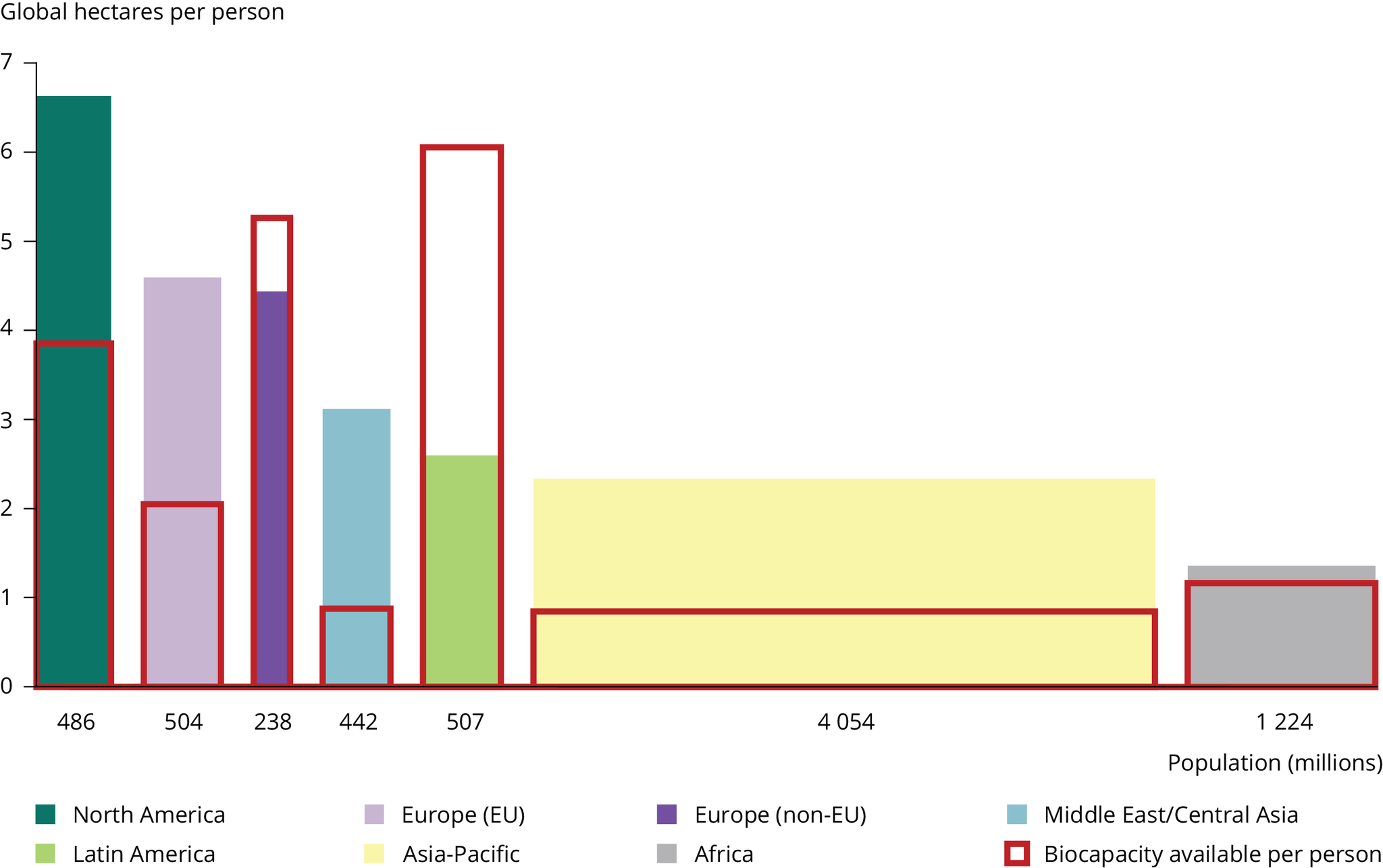All official European Union website addresses are in the europa.eu domain.
See all EU institutions and bodiesThe total ecological footprint of the 27 EU Member States and the UK is high and now more than twice the biocapacity available in the region. This high footprint means that the region’s total demand for ecological goods and services greatly exceeds the capacity of its ecosystems to produce useful biological products and absorb carbon emissions. Such a large ecological deficit is detrimental to the environment within and outside Europe.
Figure 1. Ecological footprint, biocapacity and ecological deficit per person in the European Union and the United Kingdom, 1961-2016
A region’s ecological footprint is a measure of its total demand for ecological goods and services. Although the ecological footprint does not measure biodiversity loss directly, it gives an indication of pressures on ecosystems and can be used to complement other measures of ecosystem-specific impacts on biodiversity. Biocapacity refers to the capacity of ecosystems to produce useful biological products and absorb the carbon emissions generated by production and consumption. Globally, the ecological footprint now exceeds global biocapacity, and the resulting ecological deficit is growing.
The total ecological footprint of the 27 EU Member States (EU-27) and the UK increased rapidly during the 1960s and 1970s. It has remained relatively constant since the 1980s, decreasing slightly between 2010 and 2016. Over the same period, the region’s total biocapacity increased only slightly, meaning that, overall, between 1961 and 2016, the ecological deficit in the region increased, with the ecological footprint now being more than twice biocapacity.
To meet demands, countries with an ecological deficit may overexploit their own ecological capital, draw on the biocapacity of other nations or exploit the global commons. Therefore, Europe’s large ecological deficit may have major implications on a global scale, through the degradation of ecological assets, the depletion of natural capital, biodiversity loss and ecosystem collapse.
Figure 2. Ecological footprint variation per region in 2016

On a global scale, all nations or regions cannot be net importers, and nations that rely on increasingly scarce imports, for which there is competition, will increasingly risk losing their supply. Consequently, a global ecological deficit cannot be compensated through trade and therefore corresponds to liquidation of natural capital. Europe is not the only region where the ecological footprint exceeds biocapacity: North America, the Asia-Pacific region, Africa and the Middle East/Central Asia region also have ecological deficits. On the other hand, the biocapacity of the non-EU region of Europe is slightly larger than its ecological footprint, while Latin America is the only region whose biocapacity is significantly larger (more than double) than its ecological footprint.
